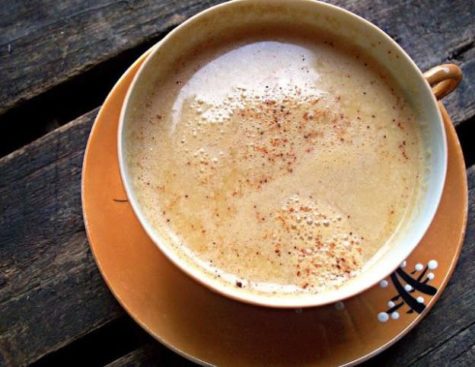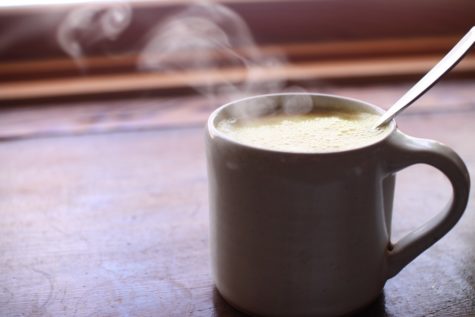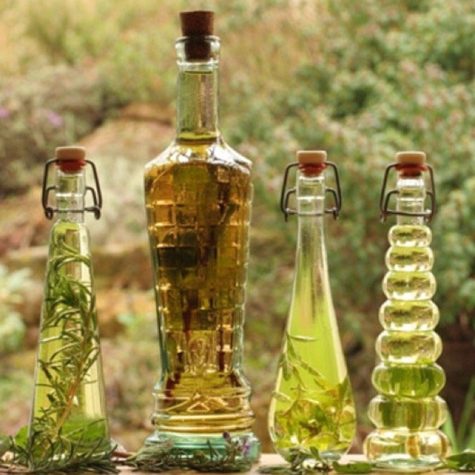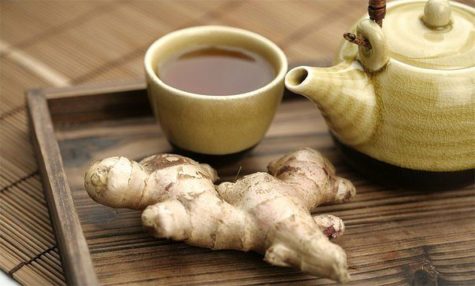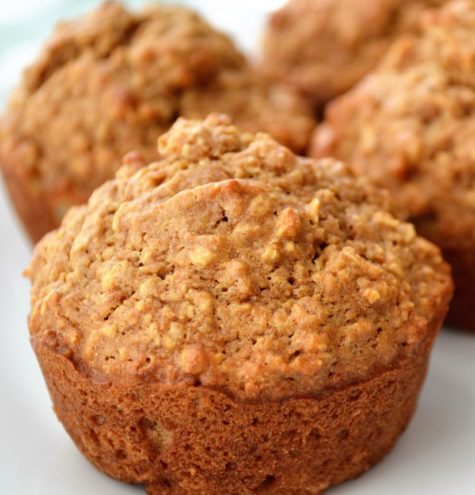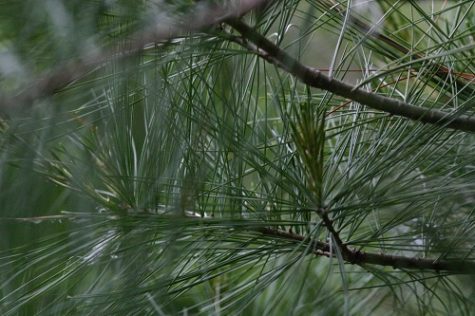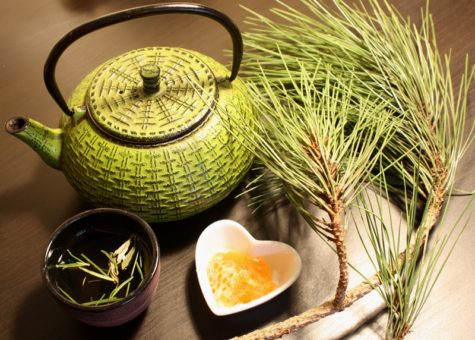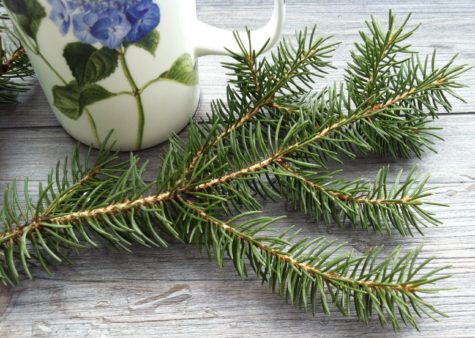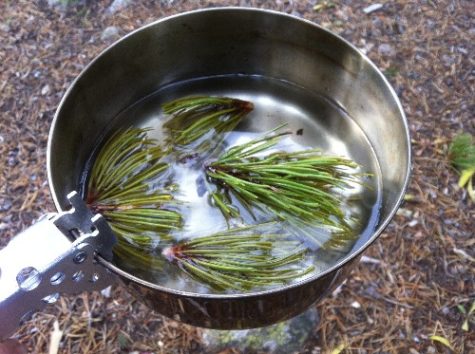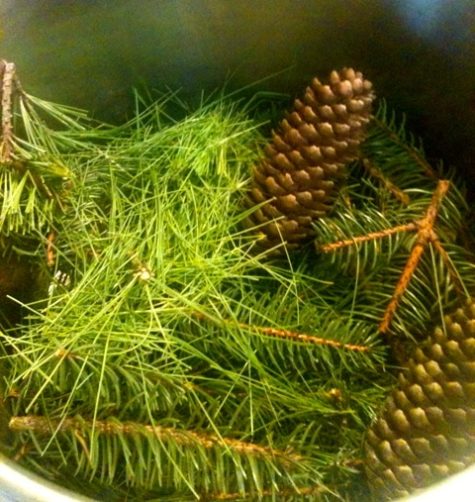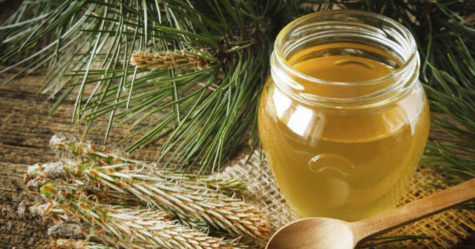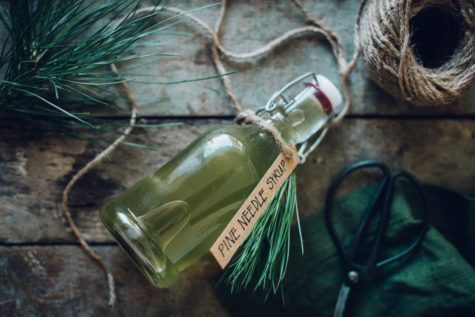Recipes
Simple Ojas Nightly Tonic
According to Ayurveda, chronic or excessive stress depletes a precious substance in the body called ojas. Ojas means vigor or vitality and is said to support healthy sleep, vitality, and virility cycles. In Ayurveda, there are certain foods and herbs that build ojas, and it all starts with milk.
To replenish and revitalize, and for a good night sleep, here’s a recipe for a mix of ingredients that can be made in advance and then added to a nightly cup of hot milk:
To 1 cup hot milk, add 1.5 tsp of the following mix:
- Chopped dates (1 tbsp)
- Chopped almonds (2 tsp)
- Coconut meat or flakes (1 tbsp)
- Saffron (1/2 tsp)
- Ghee (1-2 tsp)
- Cardamom (1/8 tsp)
Source: LifeSpa
Hot Milk Before Bed
A cup of hot milk before bed sets the stage for smooth transition into sleep. It soothes the nerves and, if you prepare it just right, it is tasty and full of nutrients. According to AyurVeda, milk is balancing to vata and pitta doshas.
Here’s a recipe to make your own delicious treat:
Boil the milk. Watch milk carefully until it boils, then let it continue to boil on low for about 5-10 minutes. Add spices (if desired).
- Turmeric reduces inflammation.
- Cardamom aids in digestion and adds sweetness.
- Cinnamon and ginger stimulate digestion and add a spicy kick.
- Vanilla flavor is also a delicious choice.
Pour the milk into your mug or cup of choice. Let sit until no longer scalding.
Optional:
After the milk cools completely, a teaspoon of honey or maple syrup can be added for sweetness. You can also add a half teaspoon of ghee (clarified butter).
Drink your milk and enjoy!
Note:
Milk does increase kapha dosha, which can cause weight gain, but this effect is lessened by using 2% or skim milk in place of whole milk. Hot milk pacifies vata dosha in the body and mind, allowing one to settle down for sleep.
In addition to these ayurvedic benefits, milk also supplies:
- Calcium, which keeps bones and teeth healthy and helps your body maintain bone mass
- Protein, a good source of energy that builds and repairs your muscle tissue
- Potassium, which helps maintain good blood pressure
- Phosphorus:, which strengthens your bones and gives you energy
- Vitamin D, which maintains bone density
- Vitamin B12, which maintains healthy red blood cells and nerve tissue
- Vitamin A which maintains the immune system, normal vision and good skin
- Niacin, which improves metabolism
Tonight, try boiling a cup of milk and feel the benefits for yourself. It may take a few tries to find the exact balance of spices you enjoy, but once you discover your favorites you will have a tasty new way to unwind in the evenings.
Baked Potato In A Can
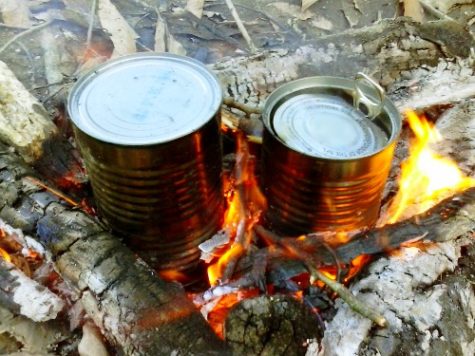
In the mood for a great baked potato while sitting around the ole camp fire? Here is a quick and easy way to make them. Remove the entire top of a soda can. Smear the whole potato with butter (and any other seasoning you like). Slip the raw potato into the soda can; cover top with aluminum foil and place the can onto the hot coals of your campfire. They bake in the can just as they would in the oven!
What I like about this recipe is that you don’t have the problem of the aluminum foil getting ripped or torn by the wood in the fire, which has happened to me more than once. Also, I think it would work with other veggies as well.
How to Make Herbal Vinegars
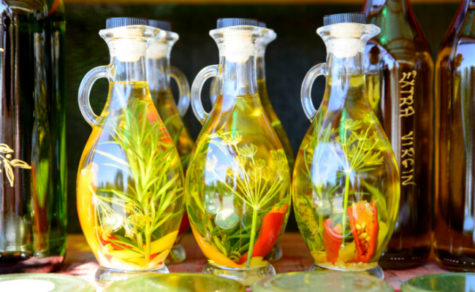
You can infuse any plant matter into vinegar to create your own funky blends! Although the preferred vinegar to use is organic apple cider you can use white or red wine vinegar too. A tip for jars is to check out second hand shops; there are some really nice bottles to be had out there!
Place several plants of your choice into the bottle. Fresh (clean and free from moisture) plant matter is best to use. You can even make an onion and garlic vinegar! Seal the bottle or jar you are using.
- Word of caution:
If you use a mason jar do not use the metal lid plate, use plastic because the acids can corrode the lid.
Let sit in a cool area (does not have to be dark) for 5 weeks; and after 2 weeks there will be flavor and you can test it. If you want it stronger let it sit longer. (I let my onion and garlic vinegar sit for 3 months before using it – wow!!)
Be sure to label your vinegar with what it is and the date you made it.
From: Edible Wild Food
How to Make Herbal Oils
Oils infused with herbs are a great way to utilize the healing properties of plants which contain volatile oils and fats.
Plants containing volatile oils are generally those commonly used in aromatherapy but they can be used as a salad oil too. Aromatic plants such as lavender, rosemary, thyme, sage, peppermint, chamomile, rose, yarrow, juniper and pine all make great oils.
You can use a variety of different oils as the base for the infusion. Olive oil is classic for the leafy herbs, sunflower, sweet almond, jojoba, or apricot oil all make a great base for creams and salves.
How to Infuse
You can use dried or fresh plant material, although fresh is generally best (except calendula-dry). If using fresh herbs, pick them on a dry day after the sun has dried the morning dew.
Make sure you pick clean plant matter; this is particularly important as you are not going to wash the plants. It must be as dry as possible to prevent spoilage, if there is any dirt brush it off with a soft-bristle brush or simply shake.
If using leaves such as comfrey or plantain, it’s good to let them wilt overnight to reduce some of the water content but flowers are best used fresh.
Chop fresh leafy herbs finely and lightly fill a sterilized, dry jar with the material. It’s important to cut the herb first as it exposes more of the plant to the oil, making for a better infusion. Flowers can be put in whole and dried herbs will most likely come already cut.
Fill the jar almost to the brim with oil because an air gap will promote oxidation and spoilage. Stir the contents with a wooden chopstick until all air bubbles have dispersed then place lid on.
You can leave it to infuse on a sunny windowsill or in indirect light.
Stir every day for the first two weeks then leave to infuse for another two to four, that’s four to six weeks in total. Calendula and some other oils are nice to double infuse- leave for 3 weeks, strain, then fill the jar with fresh flowers and pour the partially infused oil back on top and repeat the process.
Don’t forget to label your jars so you remember when to strain them. Strain through a sieve covered in cheesecloth or a jelly bag. If you used fresh material it is wise to let it stand for a week and check if any water has settled in the bottom of the jar. If so pour off the oil and discard the water.
Bottle the infused oil and be sure to label it including the best before date of the oil from the original bottle.
From: Edible Wild Food
How to Make an Herbal Tea
The standard way to make an herbal tea is to pour slightly cooled boiled water over the material to be infused, let it stand for 5 minutes, strain it, and drink it. You can let it stand longer if you want stronger flavor. You can save the strained plant material for another cup of tea because as long as you get taste and color – it’s still good to use.
The reason why boiled water should be allowed to cool for 5 minutes before pouring it on the plant material is because boiled water can harm the nutrient levels. In particular, vitamin C is denatured at 158° Fahrenheit or 70° Celsius. The same goes for cooking foods containing vitamin C.
- Fresh plant material
When a recipe refers to fresh plant material to be used, a 1/8 cup fresh material is typically used in a large mug, (or a few leaves), following the method above.
- Dried material
When a recipe refers to using dried material, use 2 teaspoons of material when making it.
- Bark or seeds
Should the recipe call for bark or seeds to be used, use 2 teaspoons of seeds or 1 tablespoon of bark.
- Sweetening your infusion
You could sweeten your nourishing herbal drink with honey or cane sugar should you so require, and a dash of fresh lemon juice may also enhance the taste.
Note:
When making herbal teas – make lots! Use it to make your rice, quinoa or couscous. Use cooled tea to water your houseplants to give them added nutrients
Source: Edible Wild Food
Oatmeal Pine Muffins
- 1 1/3 cups flour of your choice
- 1 cup quick cooking rolled oats
- 1/4 cup brown sugar
- 1/2 cup raisins
- 3 tbsp (heaping) pine powder
- 1 tbsp baking powder
- 1 egg
- 1 cup milk
- 2 tbsp melted butter
Instructions
If you are unfamiliar with pine powder, it’s very simple to make, here’s a link: Pine Powder.
Preheat oven to 375 degrees. Grease muffin tins. Combine the first 6 ingredients. Add egg, butter and milk then stir until the flour is moistened. Fill muffin cups 3/4 full. Bake 20 minutes or until an inserted knife comes out clean.
Found at: Edible Wild Food
Pine Powder
Pine needles are full of vitamin C, and have an interesting flavor. They can be powdered and added as a dry ingredient in cookie and other recipes. Here’s how:.
Collect pine needles (still on the branches) and hang them in your home to dry (choose a dry area of your home). After 2-3 weeks (depending on moisture levels in your home) remove the needles from the branches (it is OK if little bits of branches get into the needles).
Place the needles into a good quality coffee grinder or mixer and grind into powder!
Found at: Edible Wild Food
Pine Needle Tea
Pine needle tea has been prized for thousands of years for its many health benefits. What’s so good about pine needle tea? Here’s what I found out at Forest Holidays:
- Pine needle tea has a pleasant taste and smell (always a good start).
- It is rich in vitamin C (5 times the concentration of vitamin C found in lemons) and can bring relief to conditions such as heart disease, varicose veins, skin complaints and fatigue
- Vitamin C is also an immune system booster which means that pine needle tea can help to fight illness and infections.
- Pine needle tea also contains high levels of Vitamin A, which is good for your eyesight, improves hair and skin regeneration and improves red blood cell production.
- It can be used as an expectorant for coughs and to help relieve chest congestion; it is also good for sore throats.
- It brings you clarity and mental clearness.
- It can help with depression, obesity, allergies and high blood pressure.
- Pine needles contain antioxidants. These reduce free radicals, which are harmful to humans and can cause disease.
- Taoist priests drank pine needle tea as they believed it made them live longer. There is researched evidence that pine needle tea can help to slow the ageing process.
- Pick some pine needles and let them soak in boiling water on your stove and it will add a crisp pine smell all over the house. Perfect for Christmas.
How to make pine needle tea
- 1/2 cup young, bright green Eastern white pine needles
- 3 cups water
Instructions:
Bring water to a boil in a stainless steel pan. Add pine needles to water and reduce heat. Simmer for 20 minutes and remove from heat. Cover and let sit overnight or continue to next step and serve.
Strain out pine needles, sweeten to taste, and serve tea hot or cold.
Notes:
Make sure not to boil the pine needles in order to preserve the vitamin C and prevent the release of bitter terpenes. Vitamin C doesn’t last long, so drink this tea as soon as possible.
Pine Needle Tea In The Wild:
- Collect pine needles
- Build a fire
- Light it
- Boil water in a mess tin
- Add pine needles and let them infuse in the boiling water
- Sieve and serve
Enjoy your tea. Who knows, you might live to be 103 with 20:20 vision, a mind as sharp as a pine needle and no varicose veins. We’ll drink to that!
A word or two of caution:
Firstly, don’t try pine needle tea if you are pregnant. Secondly, most pine varieties can be used, but steer clear of Yew and Cypress which can sometimes be mistaken for pine. A good rule of thumb is to avoid flat needles. If in doubt, ask a Forest Ranger.
Found at: Forest Holidays
Evergreen Syrup
Spruce tip syrup used to be quite popular back in the day. It was used throughout Europe and by the pioneers in North America. Since Spruce tips grow in the spring, this syrup would have been a seasonal type of medicine. I generally make my evergreen syrup using needles and cones as these parts of the plant are most readily available, and have medicinal value as well.
Energetically, evergreens are super appropriate to use as medicine throughout the winter. Although most of the trees have lost their leaves by now, evergreens remain green, showing us that nature lives all year long. Evergreens are also helpful with the particular ailments that abound during the cold and dark season.
For the following recipe, I harvested from Norway spruce (Picea abies) and White pine (Pinus alba). Not the time of year for the tips so I used needles, twigs, cones. It turned out quite delightful with a predominantly sweet taste and evergreen-almost citrus undertones.
Evergreen Syrup Recipe:
- White pine needles, some twig ~2 oz weight (other pine species can be used)
- Spruce needles, 2 cones ~2 oz weight (other spruce species can be used)
- Filtered water to cover
- Honey- half of the amount of decoction that remains (a 1:2 ratio honey:decoction)
- Water added to evergreens
The weights are listed because I had them handy, however there is no set amount – it all depends on how much syrup you want to make. Put the plant material in a pot and cover with water. Bring this to a boil and then lower to simmer until the liquid is halved. I used a spoon as a measuring stick. You can also have a measuring cup handy to pour the liquid back and forth until it measures half of water added.
Reducing the decoction to half of the original liquid took almost ten hours. The liquid is then strained out, put back in the pot without the needles, and then the honey is added. The amount of honey to add is equal to half the amount of concentrate, so 8 ounces of concentrate would require 4 ounces of honey, or a 2:1 ratio. Warm and stir the mixture, and the syrup is done!
Medicinal Uses for the Syrup
Tree medicine is very powerful when grounding is needed. It fosters opening up to old wisdom, and letting oneself be cared for by the Earth. The evergreen forest is quiet, and feels limitless and mysterious. Evergreen syrup is good medicine for reflecting, meditating, and otherwise conjuring up introspective energy.
Decomposition of evergreen needles lowers the surrounding soil pH to provide a particularly acidic environment, a fact that I find interesting and relevant to its use as an antiseptic.
In Europe, pine products have been used as medicine since the Middle Ages, and their medicinal properties are pretty uniform across the Pinus genus. It acts as a stimulating antiseptic for respiratory infections and stuck mucus, and is useful for bronchitis, and at onset of colds and flu to stop infection. Pine is also used for coughs and asthma.
Spruce is useful to cut phlegm in the throat and lungs, and for opening air passages. It is high in vitamin C content, and can also be helpful for bladder conditions and in cases of leucorrhea.
Overall, Spruce and Pine syrup is great medicine to have on hand during the winter and early spring season. It can be used for acute illness, and as a winter tonic to provide a bit of sunshine in the form of a local source of vitamin C.
Evergreen syrup is also really tasty, making it an easy medicine to work with as it can be added to hot water, porridge, pancakes, or taken straight.
From: Herb Geek
